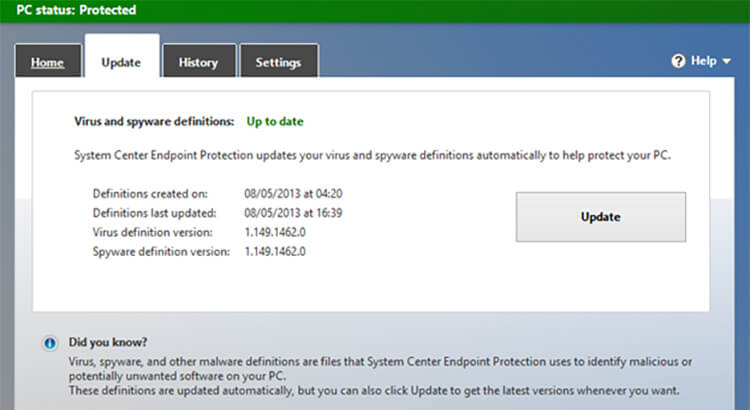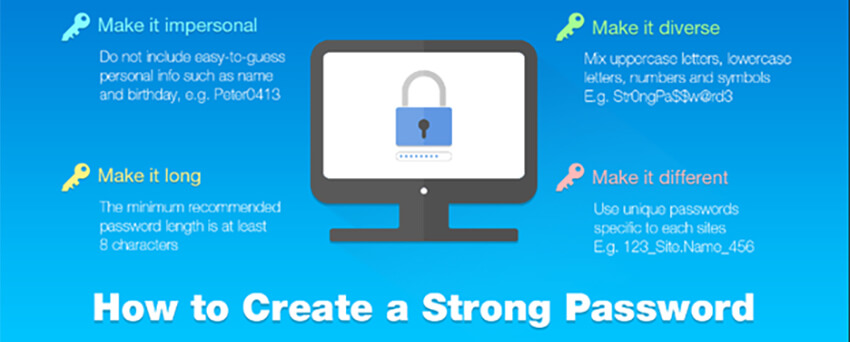How to Stay Safe When You Go Online
Transferable SkillsAttempting to live without going online is almost impossible today. From basic communication to shopping to conducting business, the internet is part of our lives.
Unfortunately, there are those who will do whatever they can to hack your accounts and use what they find for their own purposes. Developing the habit of protecting yourself and your information is imperative. Even if you currently use a few methods to stay safe, there’s always room for one (or many) more. Check these tips to see what you can do to beef up your efforts.
Protect Your Connection
If you don’t have some sort of password or code associated with your internet service, it’s time to change that.
It’s all too easy for hackers to get into your home Wi-Fi network and then all heck can break loose. Once that information is captured, you are a prime candidate for identity theft. The end result for more than one unsuspecting citizen has been ruined credit and a drained bank account.
Business owners are just as vulnerable to data collecting if their servers are not properly protected. Website pages, client lists, financial data, and even sales databases can be accessed and copied before anyone in the company realizes what’s going on. From there, it’s a short trip to the dark web to post that information for sale. The damage done to your business could take years to undo or perhaps be severe enough to shut the company down permanently.
The bottom line is to secure your network and the connections. Whether at home or at work, it’s the first line of defense for staying safe.
Make Sure Your Virus and Malware Protections are Up to Date
You’ve installed anti-virus software that also includes spyware and malware protection.
While that’s a great move, when was the last time you checked for updates? How about running a manual scan using that software? If you don’t have ready answers to both those questions, there’s some work to do right this minute.

New threats emerge daily. You can protect yourself from data breaches and other issues by setting up automatic updates to your protection software. Ideally, the updates should occur at least once every 24 hours. If you prefer to check the updates before they are installed, there are settings that allow you to do so.
If your system is not set to run automatic scans at some point shortly after installing the updates, change those settings. At the very least, make sure you conduct a manual scan once a week. That software is only as good as the latest updates. Even then, it will not help you much unless it’s used to scan for any threats that may have gotten through the defenses. Be proactive and you will avoid a world of hurt.
Don’t Be Click Happy
Watch what you open and where you click. Spyware can be picked up when you participate in a Facebook quiz or choose to open what appears to be an innocuous email.
Worse yet, these and similar activities may expose you to ransomware.

What is ransomware?
It’s software that effectively locks you out of your system and requires remitting some sort of payment in return for removing the infection and restoring your access. While there are ways to get around it, most people are not up to the task and end up paying the ransom.
A better approach is to approach everything from emails to links with a healthy dose of scepticism. If you receive something from the bank that includes a link, don’t click on it. Call the bank instead. Look closely at the email address of the sender. Does it look almost but not quite like a legitimate email address? Are you wondering why “a friend” sent you a file in an unusual format?
Those are all warnings to check first and click later.
Visit Only Secure Sites
Not every website is secure, but it’s easy to tell which are.
Secure sites have addresses that begin with “https.” If all you see is “http,” you’re asking for trouble by choosing to visit that site. This one habit will go a long way towards keeping you safe online.
Be Selective in What You Share Online and With Whom
Do you love participating in quizzes on social media? Maybe you don’t think twice before sharing things like your birthday, full name, location, and other information on message boards or similar sites.
Hackers can scrape those sites for information and use it for all sorts of purposes - hardly any of which you’ll like. That includes opening accounts in your name and eventually ruining you financially.
Be careful about what you do and do not share online. Even if you think only your friends are looking, other eyes could be at work. Err on the side of caution and keep that data to yourself.
Be Mindful of Sketchy Apps
Many people think that most risky online behavior is associated with desktop and laptop usage only. Your smartphone can also be another way your information can be stolen.
Apps that are not from a trusted source are often the problem. Always research apps before you download and install them. This is true even if the app is available through a trusted provider and certainly essential if you are thinking of installing an app from a questionable source.
Apps may include software that tracks movement online, captures whatever you type, or copies passwords when you log into different sites. Don’t assume your phone is any safer than your laptop. Be mindful of what you install and only go with apps that are verified, secure, and from the actual manufacturer’s website.
Your First Dog’s Name is Not a Good Password
There was a time when simple passwords were sufficient. That’s no longer the case.
You need passwords that are difficult for any person or even any type of password generating software to figure out. While this will require some effort on your part, the right approach to creating passwords will protect you from a lot of threats.

Forget about using a password that is easily associated with you. Names of pets, streets where you’ve lived, favorite songs and similar sources of inspiration need to be set aside. What you want is a password that includes an eclectic mix of upper and lower case letters, numbers, and symbols. Your creativity will pay off in making it that much harder for anyone to hack the account and grab your data.
There are two other things about passwords to keep in mind. Never use the same one for two or more accounts. While it would be convenient for you, it’s also convenient for anyone who is trying to steal your private data. Make a game of it and see what sort of wild passwords you can create. While you have fun, the hacker is getting a good dose of frustration.
You should change your passwords on a regular basis. Some financial and other institutions make it mandatory every three to six months. Don’t be annoyed. Be happy they’re helping you stay vigilant. Regardless, passwords on anything important need to be changed on a recurring basis.
Final Thought
Let these strategies serve as a starting point for your mission to avoid becoming another identity theft statistic. Implement these suggestions and then look for more. Unless you plan on signing off the internet for good, you owe it to yourself to make your online time as safe as possible.
About the Author
Gary Stevens is a front end developer. He's a full time blockchain geek and a volunteer working for the Ethereum foundation as well as an active Github contributor.
